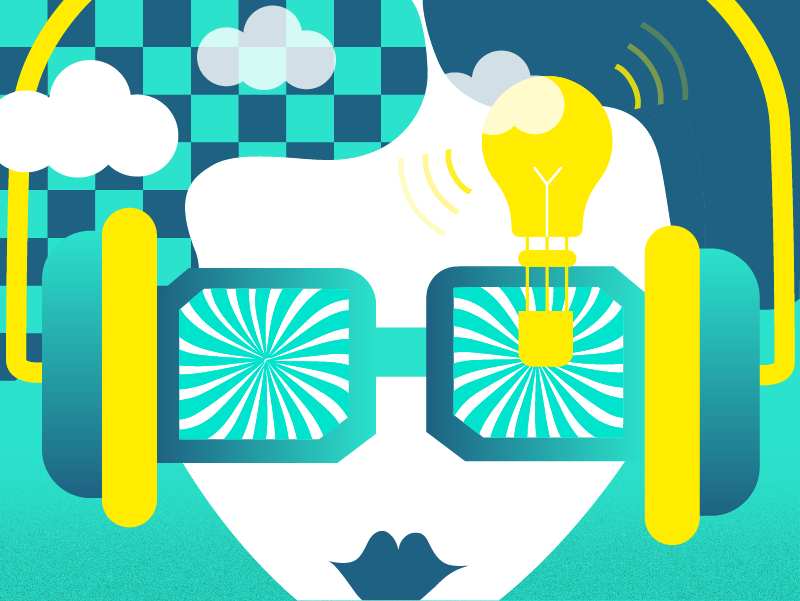
Feb 11, 2020 | Insight
Data and analytics help aligning HR strategy with the organization’s business goals. It is widely recognized that the people within an organization are one of its most valuable assets. Artificial intelligence and machine learning are enabling human resource officers to use data and analytics to assist them in making decisions regarding the people they manage. Ideally, companies will use tech driven intelligence and data analytics in the sourcing and hiring process, all the way through the individual’s career journey within the business.
Using AI and data analytics enables companies to make decisions in real time. This is naturally more cost effective and contributes to the overall agility of the organization. When using AI, decisions regarding the performance of employees can be made immediately and organizations do not have to wait for quarter year progress and performance reviews.
According to Michigan State University there are five ways in which HR and management teams are using data and analytics to increase the performance of organizations.
- Measuring Performance
Businesses and organizations can use data and analytics as well as AI to determine performance targets for employees. These benchmarks can be used to train and encourage current, new and future employees to understand these requirements and the impact they have on their job role. The data collected not only serves to benefit the organization, but it can also be used to help guide the individual in question. Areas that are looked at include not only professional performance, but also all over wellness and energy. Data obtained from top performers can be used to understand the process better and establish what is needed in order to complete the job objectives more efficiently. This can also contribute to training processes and increasing the efficiency thereof.
- Informing salary decisions and promotions
By utilizing data, employers can observe and monitor the rate at which promotions and raises are given to employees. Using data also means that the key factors driving raises and promotions can be identified and observed. Is it more ethical to promote a junior that made a big sale recently, or the senior employee that consistently delivers quality performance? By using AI algorithms managers are supported in their decisions.
- Understanding Attrition and Increasing Retention
Performance based data and analytics can indicate and predict which employees might be at higher risk of leaving the company. It also serves to capture information that tells us what factors cause or contribute to attrition. Sometimes underlying factors like a manager’s interpersonal communication style can affect attrition more than money does. When you are aware of the variables impacting on your staff, you are able to adjust these to increase your staff’s performance, or to identify the problem areas. Understanding these variables also means that you are able to evaluate your recruitment and training processes.
- Examining Employee Engagement
Employee engagement is a very important metric that businesses and organizations need to be aware of and use to their benefit. This data is often gathered by using external parties to conduct surveys. However, with the technologies available today, businesses and organizations can easily conduct these surveys in house. When this is done in house, the surveys can be shorter as well as more frequent. AI tools help gain immediate insights in these surveys. Gamification can also be used to get the required information from the employees.
- Measuring Employee Development and Learning Outcomes
Successful training programmes help businesses to reach their business goals. Rather than ask the participants what they thought of the training programme, a business should shift its focus to measure the employees understanding of the training programme. The employees’ whole training process should be observed, measured and tracked. By recording this data, the business can see how effective every part of the training process is, as well as how the training process can be improved in the right areas.
Insight
In the core of data analysis is defining the right questions. Only then can it be evaluated which kind of data is needed, and from which sources. The selected data can then be collected, combined, cleaned and analyzed. It is this process that eventually creates insight.
When you have insight into how your employees’ function and why they do what they do, you are able to provide them with a better work environment fit. Having a good work-environment fit will contribute to their employee satisfaction and this has only positive consequences.

Dec 4, 2019 | Design, Digital Learning, Insight
We live in an age of rapid transformation. This means our current skillsets frequently get outdated. Learners of today are expected to continually learn and develop their skills.
Building a culture of continuous learning and development is at the forefront of a healthy corporate culture. This can be established by providing the learners with just-in-time learning opportunities.
Tailored everyday learning
Organizations are moving away from a one-size-fits-all approach to learning and development. This includes creating personalized learning paths to help employees in their current as well as their future roles.
Learning is expected to be an integral part of the everyday work. Technology can aid employees to learn at their own pace. An e-learning course can easily be carried out in pieces or repeated if needed. With the help of data and artificial intelligence we can tailor and recommend trainings just according to the needs of the individual.
With the abundance of open online learning content, the practice of content curation and validation becomes all the more valuable and helps to separate the wheat from the chaff.
Gamification
Game-based learning can both educate and engage the users. What is important to note here is that the games need to be well structured and keep the player engaged in the learning process. They need to be challenging, rewarding, time efficient and mobile.
At Intolead we have successfully implemented gamification into the learning solutions we have created together with our customers. One example is a new employee’s onboarding course that was created in a form of a game board. That way the information is well structured, and the learner proceeds the onboarding like playing a game by completing different tasks.
Social Learning
The majority of employees say that knowledge sharing with their team is critical for their learning. Peer-to-peer learning is increasingly gaining traction because it empowers people to share relevant content with their co-workers. Employees expect workplace technologies to enable social networking, online collaboration, video conferencing and instant messaging.
Micro learning
Micro learning enables an organization to implement learning in small sections (3-5 minutes) that are objective driven and are easy to utilize within organizations. Learners are also able to repeat the modules, so retention of information is better.
Micro learning can be implemented in various forms (videos, quizzes, podcasts etc.). Its biggest advantage is that it can be implemented on any device.
Mobile Learning
This is not a new trend, but message from our customers is clear: mobile is becoming the preferred option to view content. Mobile friendly curated content will enable employees to do their training courses anywhere, anytime. Mobile-optimized learning platforms will include access to the above-mentioned gamification and employee-curated information as well as social learning and peer-to-peer interactions, video’s, blogs and the rest.
What are your workplace’s needs?
No workplace is the same and the needs of employees and companies vary.
Although learning is becoming more self-driven there is still need for managers to help promote learning at the workplace by providing the resources needed. Ideally, the employee’s own developmental needs and interests are in line with the organization’s targets.
Good learning solutions are not just e-learning courses, but overall solutions for the organization’s competence development that support the strategy execution of the company. We at Intolead take into account the needs of learners and businesses and design the learning solutions accordingly.

Nov 1, 2019 | Business Strategy, Design, Insight, Strategy
Visual management utilises instinctive visual cues to convey accurate information in a succinct way. This enables management, employees and customers to receive key information at a glance.
Studies show that people remember as much as 80% of the things they see and do but only remember 10% of the things they hear and only 20% of the things they have read.
Visuality is the process of seeing or looking, but has a clear purpose, is more critical and direction oriented than merely seeing. It applies to our sensory perception and how information can be communicated quickly and effortlessly by using mainly our human sense of sight as well as our other senses. An easy to understand example of visuality and how visual perception relates to the immediate understanding of certain concepts is the white or yellow lines on a road.
Visual Management is about communication
Signs and other visual cues are put in place to help employees and customers make sense of the organisational context or business by merely looking around. Visual Management in the workplace gives structure to the space and enables the easy flow of work processes.
All it takes to understand certain operations is to look around. It is a management system that tries to improve the performance of an organisation or business. Visual Management does this by connecting and aligning the vision of the organisation, its core values, culture and goals with other work place related elements such as management systems and work processes by using human sensory experiences. These stimuli directly engage one or more of our five human senses: sight, sound, smell, taste and touch.
Benefits of Visual Management
Using Visual Management can entice staff to be more creative thinkers. Using Visual Management also means that the environment is constantly communicating with the employees and customers. This can lead to bottom-line improvements as well as improved safety in the organisation. Visual Management also helps with company-wide alignment and unity.
By displaying the current progress of projects for all to see, top management is able to receive progress information every time they look at the display. Not only does this indicate what the progress on each project is, it also indicates to staff what the next steps are as well as how to go about achieving the rest of the project objectives.
Secondly, using Visual Management encourages employee engagement by allowing ownership of goals and creating or increasing motivation among the employees. Visual Management is non confronting in its approach, but it does demand authority and represents the real time factual status of projects. It embeds a culture of continual development and improvement in every aspect of the company.
Thirdly, Visual Management can be used to convey transparency in an organisation. By having it out in the open, no information is hidden. This means that the goals and progress of the project is shared openly and they company is united in achieving these goals.
Visual Management might seem like a foreign concept to grasp, but the application thereof is without a doubt incredibly practical. Visual Management is an easily applied practical concept that could improve everything in a business, from the bottom-line through to overall company morale, overall company safety and transparency.
References:
Tezel, A., Koskela, L. J., Tzortzopoulos. (2009). The Functions of Visual Management. Conference Paper.

Sep 18, 2019 | Design, Future Skills, Insight, Strategy
Whether you’re an entrepreneur, executive, expert or an educator, we’re all increasingly being asked to make decisions about our impact – and the impact of the companies and organizations we work or interact with. More and more companies and organizations are talking about impact and aspiring to create it. Yet, our shared approaches to systematically collecting impact data and making decisions based on it – are still inadequate or confusing.
From accountability to impact
The term impact has often been defined to refer to significant or lasting changes in people’s lives, brought about by a given action or series of actions. Since the early 1990s, the requirement of accountability has been ascendant. A more recent manifestation of this discussion has centered on impact, or demonstrating evidence of how much difference you’re making.
Metrics & alignment
Harvard Business School professors Ainoor Ebrahim and V. Kasturi Rangan argue in their article that it is not feasible, or even desirable, for all organizations to develop metrics at all levels of a results chain, from immediate outputs to long-term societal impacts. Their claim is that the more important challenge is one of alignment: designing metrics and measurement systems to support the achievement of well-defined mission objectives. According to them, impact is better measured at the higher, systemic level, leaving the individual organizations to do what they do best — focus on their more specific missions.
Two types of impact
There are however two different types of impact that we need to take into account: Program-level impact is the impact that individual services have on the people who directly participate in them. Community-level impact is the impact that many different partners, working in collaboration, have on a specific population (community, town, state. etc.) Individuals and organizations can only be held responsible for the performance of the programs and services that they manage.
Impact for learning
When it comes to learning, it is important to try to grasp the impact of your efforts on a program-level. Let’s say you organize a series of coaching sessions aimed for all the managers in your company. The usual way to follow up on this kind of initiative is to focus on the numbers: i.e. how many of all the managers have participated the coaching. Now, this is all well and fine, but instead of settling for the reach in numbers, we should also be able to get an idea of what changes after the coaching. Did the managers adapt newly acquired skills to practise? Can the team members or colleagues tell the difference? It is precisely these kinds of questions we need to address in order to gain insights on the depth of impact for our learning efforts.
Impact tools & frameworks
While this may sound like an overly complicated a task, there are tools and frameworks that can help you better understand and accomplish this.
With the help of technology we can collect data from end users more efficiently. We can then extract insights in ways that allow us to better serve our customers and achieve more impact.
Another possibility that can help in our impact efforts is systems practice. It is an approach that can help to gain clarity about your environment as a dynamic system. It also provides an approach to effectively learn and adapt your understanding of your system and the impact your trying to achieve.
Impact analysis frameworks have also evolved from assessment of immediate results to measuring longer term outcomes and impacts. While these include various different philosophies and approaches from expected return methods to theory of change and lean data, they are not mutually exclusive. In many cases it is good idea to figure out which approaches are most suitable to your project and then combine several of them accordingly.
Ultimately learning about impact is grounded in a simple activity: listening to open and unbiased feedback from our customers and end users. Rather than a separate project, impact is something to be continuously pursued. It is also a key to finding sustainable solutions and designing growth – be that on a business, community or individual level.

Sep 6, 2019 | Business Strategy, Sales
The world of sales evolved from being face-to-face for thousands of years, to telephonic sales, email sales and now, we’re in the era of social selling. Rapid technological changes are happening at an exponential rate when it comes to sales and affects us in a multitude of ways. In this blog, we will look at what the future has in store for sales consulting.
Know your consumer
This should not be something new to people in the sales world but is more relevant today than ever before. In order to sell successfully to our target market, we need to know who they are, what they want and how they want us to provide them with this great product or service. Consumer centric approaches to sales are crucially important.
Millennials now make up the largest part of the buyers over all industries. They are more focused on experiences and they want to be inspired, not just be given information from businesses and organisations. Millennials want to feel special and more and more brands are providing individualised experiences for their consumers. Engaging consumers in a hyper-targeted way can make consumers feel more appreciated which will lead to higher levels of brand loyalty. If your consumers trust your brand, they will be more willing to part with their data and information especially on important aspects such as their preferences. According to Future 100, Target, the American retail chain, does a great job at this via their Studio Connect app. This app allows customers to create products that if selected will make it to production.
As Millennials age, a new generation of individuals are entering the workforce and consumer space. Gen Z is the generation of individuals that were born in the mid 90’s to the mid 2000’s. According to Forbes, Gen Z’s account for up to EUR118 billion in spending and they will make up the biggest part of consumers in 2020. Gen Z differs from previous generations because they were born into a hyper-connected, technologically-assisted age. They grew up using social media, online shopping, smart phones and technology on a daily basis. Gen Z is very aware of their impact on the earth and how their choices can make a difference.
Environmental issues are very important to them. They prefer sustainability and minimalism over consumerism. Surprisingly enough, they prefer brick and mortar stores over online shopping. The buying style of Gen Z is ‘hunteresque’ in the way they search, explore and source the products they choose to buy. Like Millennials, they want to feel special and appreciated, with a very high awareness level of the impact of what they consume.
Use technology strategically and educate your sales force
As technology evolves, various apps and platforms exist to aid sales. However, it is no longer sufficient to just set up technological aides. Businesses have to have a spirit of innovation along with the sales tech.
Companies have to empower their sales force to be able to do optimum work. Enabling this should ideally be done by incorporating training and technology into a coherent and actionable strategy. This will enable your company to be agile in acquiring new sales people and have them performing from the start.
Consistent monitoring, educating and coaching of your sales force is crucial. With the rapid rate of transformation, it will be hard for them to do so on their own. Businesses need to have a clear-cut strategy for sales and growth, and they have to include their sales force in the actioning thereof. Forbes recommends MindTickle for this purpose.
Social Selling
In order to sell to our target market, we need to be visible where they are searching. We need to have a strong presence on social media and relevant platforms. Different social media platforms are best suited to different industries. If you are in the health, beauty or fitness fields, selling and marketing on Instagram for example might be more suited to you than LinkedIn. However, this does not mean that you should be present on only one social media platform. The more social media platforms you can efficiently manage, the bigger your reach will be.
Buyers today are very focused on the online look and feel of brands. How your brand presents themselves online will influence consumer’s perception of you. Using video in marketing and selling is an easy way to show your brand or business to the world. By collaborating with influencers, businesses can instantly become relatable, real and more human.
In order to be able to provide their employees and consumers with the above-mentioned trends, businesses have to be very secure in what their purpose is. It’s easy to lose track of the main goal a business or company has if their purpose is not clearly defined. This is crucially important in an era where change is constant, and disruption and innovation are the norm.

Aug 23, 2019 | Insight
In order to show the CEO of the company that the learning and development objectives are worth the budget, it is important to capture data on every person that does as well as completes their individual training. Other areas that are important to monitor are how much time the employees spend actively engaging on the learning platforms.
Designing for Impact
For CEO’s the level of expenditure means the stakes are high and they expect tangible returns. An evidence-based approach is very important here. In order to do this the developmental needs of an organization needs to be assessed. After this has been done, the outcomes of learning need to be analyzed. This will serve as information to describe how this process closes the gap between where the company or employee is currently performing at and where they need to be. Indicating how the learning translates to increased efficiency and productivity is key.
Learning Data + People Analytics
Learning and development does not stand alone in its functioning. It plays a crucial role in identifying and setting the foundation of the company’s vision for its workforce. Companies and organizations are moving from descriptive analytics to predictive analytics. Learning data can be incorporated with people analytics to understand aspects of learning such as retention and staff promotion. People analytics enable companies to understand their employees through looking at their employee attributes. It also enables companies to have access to employee behavior and performance. It also enables companies to keep track of which of their employees have the necessary skills that will be needed if they need to pivot quickly. It enables companies to be agile and to have information about their employees at the click of a button, such as qualifications, skills and certificates to guide and support them in making employee and growth related decisions.
Enabling continuous learning
Technological innovations and changing consumer preferences are constantly causing disruption in the status quo. Strategic competence development is vital for any organization hoping to succeed in this transformative landscape. E-Learning serves as a helpful tool to companies, as it helps them and their employees navigate the rapid changes they are experiencing. Due to the constant changing and evolving nature of the world of work, companies will have to assist their employees in acquiring new skills to ensure that they stay on top of their game. At the same time learning has become more user-centric. Employees at all levels expect dynamic, self-directed, continuous learning opportunities from their employers. This seems like a daunting task, but with the help of digital technologies, we are better equipped than ever before to solving It. Soon we will see how AI powered applications aid us to achieve better learning results. However, even more importantly, It is essential to integrate continuous learning into the company culture, leading to more engaged and productive employees.






